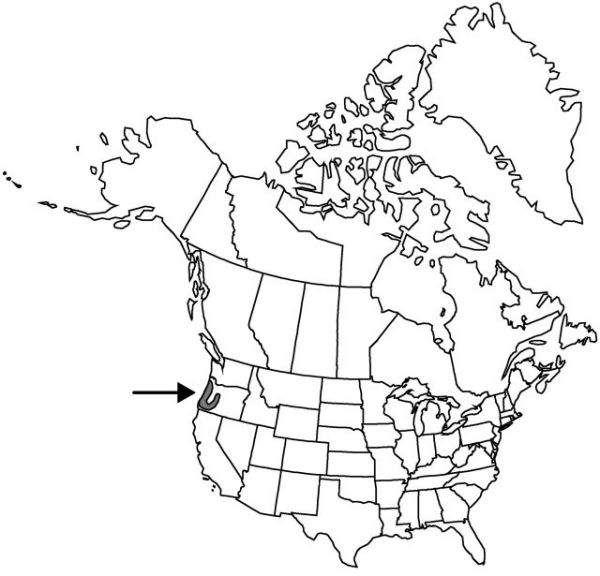Difference between revisions of "Scoliopus hallii"
Proc. Amer. Acad. Arts 14: 272. 1879.
Common names: Oregon fetid adder’s-tongue
Treatment appears in FNA Volume 26. Treatment on page 118.
FNA>Volume Importer |
FNA>Volume Importer |
||
| Line 47: | Line 47: | ||
|publication year=1879 | |publication year=1879 | ||
|special status= | |special status= | ||
| − | |source xml=https://jpend@bitbucket.org/aafc-mbb/fna-data-curation.git/src/ | + | |source xml=https://jpend@bitbucket.org/aafc-mbb/fna-data-curation.git/src/8f726806613d60c220dc4493de13607dd3150896/coarse_grained_fna_xml/V26/V26_146.xml |
|genus=Scoliopus | |genus=Scoliopus | ||
|species=Scoliopus hallii | |species=Scoliopus hallii | ||
Revision as of 16:42, 18 September 2019
Stems very short, 2.5–10 mm. Leaves 2(–3), subsessile; blade rarely mottled with purple, oblong-elliptic, 8–14 × 2.5–5 cm. Flowers 1–5; outer tepals yellowish green with purple lines, lanceolate to oblanceolate, 6.5–10 mm; inner tepals linear-spatulate, 6–9 × 0.3 mm; filaments 2–4 mm; anthers 1.9–2.3 mm; style 2–2.5 mm; stigmas spreading to recurved; pedicel very slender, elongating to 6–10 cm. Capsules 16–18.5 × 5.5–7.5 mm, including beak. 2n = 14.
Phenology: Flowering late winter–early spring.
Habitat: Coniferous woods, mossy mountain stream banks
Elevation: 0–800 m
Discussion
Selected References
None.
Lower Taxa
None.
